- Home
- Edward Lee
Smoke and Pickles Page 3
Smoke and Pickles Read online
Page 3
There is no limit to what a good rice bowl can be. I think this recipe proves that. The meatloaf closely resembles the meat in an NYC-style Greek gyro, the kind that I loved so much as a kid. However, this is a more elegant version, infused with lots of fresh herbs. Don’t even bother with dried herbs. I make the lamb in a loaf pan just like you would a traditional meatloaf but then go the extra step of slicing and panfrying it to give it a crispy texture. / Feeds 4 as a main course or 6 as an appetizer
1 pound ground lamb (85% lean)
1 teaspoon chopped fresh oregano
1 teaspoon chopped fresh marjoram
1 teaspoon chopped fresh rosemary
1½ teaspoons salt
½ teaspoon freshly ground black pepper
½ teaspoon pimentón
½ cup chopped onion
1 garlic clove, chopped
Tomato-Yogurt Gravy
1 teaspoon olive oil
1 onion, finely chopped
½ teaspoon cumin seeds
4 plum tomatoes, chopped
½ cup dry white wine
1 tablespoon tomato paste
½ teaspoon grated fresh ginger (use a Microplane)
1 garlic clove, minced
2 bay leaves
2 tablespoons plain yogurt
1 tablespoon unsalted butter, softened
½ teaspoon sea salt
¼ teaspoon freshly ground black pepper
Corn oil for panfrying
4 cups cooked rice (see page 4)
Greens from 1 bunch scallions, finely chopped
1In a medium bowl, combine the lamb, herbs, salt, pepper, and pimentón.
2Puree the onion and garlic in a food processor. Pour this mixture into a strainer and press out as much of the excess liquid as possible. Knead the onion and garlic mixture into the ground lamb. Chill in the refrigerator for 40 minutes.
3Preheat the oven to 300°F.
4Transfer the lamb mixture to a food processor and pulse for 1 minute, or until the mixture is smooth and dense. If you need to pulse for longer than 1 minute, add an ice cube to the food processor so the mixture stays cold. Transfer the mixture to an 8-by-4-inch loaf pan and shape into a loaf with a slightly domed top.
5Bake the meatloaf for 35 minutes, then turn up the oven to 325°F. Bake for another 10 minutes. Check the internal temperature of the loaf by inserting an instant-read thermometer into the center: It should read between 150 and 160°F. If it doesn’t, return the loaf to the oven and check the temperature every 5 minutes.
6Invert the meatloaf onto a plate, turn right side up, and let cool to room temperature.
7To make the tomato-yogurt gravy: Heat the olive oil in a medium skillet over medium heat. Add the onions and cumin seeds and sauté for 4 to 5 minutes, until the onions are soft. Add the tomatoes, white wine, tomato paste, ginger, garlic, and bay leaves, bring to a simmer, and cook for 20 minutes. Turn off the heat and let the sauce cool for 5 minutes.
8Add the yogurt, butter, salt, and pepper to the gravy and whisk thoroughly. Remove the bay leaves and keep the gravy warm until ready to serve.
9Cut the meatloaf into thin slices. Heat a large skillet over high heat and add ¼ inch of corn oil. Working in batches, add the meatloaf slices and panfry until crispy on the first side, about 4 minutes. Flip and cook for 1 minute longer on the other side. Transfer to paper towels to drain.
10To serve, scoop the rice into your rice bowls. Place slices of fried meatloaf over the rice. Spoon the gravy over the meat and top with scallion greens. Serve immediately, with spoons—it is best to mix everything together before enjoying.
If you want a classic NYC-style gyro, after frying the meatloaf slices, pile them onto warm pita bread with a bit of cucumber-yogurt sauce, chopped fresh tomatoes, sliced onions, and a liberal sprinkle of hot sauce, and roll it tightly in aluminum foil to catch all the juices.
Orange Lamb-Liver Pâté with Braised Mustard Seeds
It’s a shame we think of pâté as being made only with chicken or duck livers. Lamb’s livers are packed with flavor and nutrients. The orange zest in this recipe gives the pâté a delicate perfume. Don’t overcook the livers, and always take the extra step of pushing the pâté mixture through a tamis or a fine sieve. The added effort makes the difference between a pâté that’s gritty and one with a creamy, velvety texture. / Feeds 6 as an appetizer
Braised Mustard Seeds
⅓ cup yellow mustard seeds
⅓ cup brown mustard seeds
½ cup water
½ cup dry white wine
2 tablespoons apple cider vinegar
2 tablespoons sugar
2 tablespoons honey
2 teaspoons Dijon mustard
1 teaspoon sea salt
Pâté
12 ounces lamb’s liver
2 tablespoons unsalted butter, plus 2 tablespoons softened unsalted butter
1 cup chopped onions
1 garlic clove, minced
1 tablespoon bourbon
1 teaspoon sherry vinegar
2 teaspoons grated orange zest
½ cup heavy cream
2 teaspoons Dijon mustard
2 teaspoons kosher salt
¼ teaspoon freshly ground black pepper
Warm toasted bread for serving
Pickled Chai Grapes (page 178)
1To make the braised mustard seeds: Combine all the ingredients in a small saucepan and bring to a boil over medium heat. Lower the heat and simmer for 18 minutes. Transfer to a glass jar, let cool, and refrigerate overnight.
2The next day, make the pâté: Soak the lamb’s liver in a bowl of ice water for at least 1 hour and up to 2 hours.
3Drain the liver, rinse, and pat dry on paper towels. Cut the liver into 1-inch cubes.
4Heat a 12-inch skillet over high heat. Add the 2 tablespoons unsalted butter and heat until foamy. Add the onions and garlic and sauté for 2 minutes. Add the lamb’s liver and cook for 2 minutes, until lightly browned. Turn the heat to low and add the bourbon and sherry vinegar. Cook until most of the liquid has cooked off, 2 to 3 minutes.
5Transfer the lamb mixture to a blender. Add the softened butter, grated orange zest, heavy cream, Dijon mustard, salt, and pepper and blend on high for 2 minutes, or until smooth. It should look like a thick milkshake.
6Gradually pour the contents of the blender through a fine-mesh sieve set over a bowl, pushing on the solids with the back of a spoon; discard the solids.
7Pour the pâté mixture into six 3-ounce ramekins or small coffee cups. Refrigerate for at least 3 hours before serving. (The pâté can be made up to a day ahead.)
8To serve, top the pâtés with the braised mustard seeds. Serve with warm toasted bread and the pickled grapes.
Darkly Braised Lamb Shoulder
Braising lamb coaxes out deep, hidden notes that yearn for dark flavors like chocolate and sorghum. Using a Dutch oven makes all the difference in a recipe like this, but you can use any heavy pot with a tight-fitting lid. Your lamb shoulder may still have the first three ribs attached to it. The extra bones will add flavor to your broth; you can pull them out before you serve the lamb. Serve this with Soft Grits (page 213) and Red Cabbage–Bacon Kimchi (page 166). / Feeds 6 as a main course
¼ cup kosher salt
2 tablespoons freshly ground black pepper
1 lamb shoulder roast (3 pounds; see note)
2 tablespoons canola oil
1 cup chopped onions
1 cup chopped carrots
1 cup chopped celery
3 garlic cloves, minced
1 cup chopped button mushrooms
1 jalapeño pepper, chopped (seeds and all)
½ cup bourbon
¼ cup ketchup
&nbs
p; 1 tablespoon soy sauce
1 tablespoon balsamic vinegar
3 tablespoons sorghum
¼ cup black bean paste (see note)
1½ ounces bittersweet chocolate, chopped
6 cups chicken stock, or as needed
Cooked grits or rice for serving
1Make a rub by mixing the salt and pepper together in a small bowl. Rub this all over the lamb shoulder and let sit at room temperature for about 30 minutes.
2Heat the canola oil in a large Dutch oven over medium-high heat. Once the oil is hot, add the lamb shoulder and brown on all sides, about 3 minutes on each side.
3Add all the vegetables to the pot, tucking them around the meat so they will brown a little. After about 3 minutes, add the bourbon, ketchup, soy sauce, balsamic vinegar, sorghum, black bean paste, chocolate, and stock. The liquid should completely cover the lamb; if it doesn’t, add more stock or water to the pot. Bring this to a simmer over medium-high heat. Skim any foam that rises to the top. Lower the heat, put the lid on the pot, and simmer gently for 2½ hours.
4Take the lid off the pot and cook for an additional 30 minutes. Check for doneness: Does the lamb feel as if it will easily pull off the bone but is not so tender that it will turn to shreds when you try to lift it out of the pan? Good, it is done. Turn off the heat and let the lamb rest for about 15 minutes. (If you want, at this point you can cool and refrigerate this to reheat and serve at a later time; it will actually be better the next day.)
5Transfer the lamb to a cutting board. Slice the meat against the grain or pull it off the bone in large chunks. Serve it over grits or rice in warm bowls. Ladle the braising liquid with the vegetables over the meat and serve immediately.
If you can’t find lamb shoulder, a 3-pound boneless leg of lamb roast will work fine too. You can also use a boneless roast cut into chunks.
Black bean paste is a Chinese condiment made from fermented black or, sometimes, mung beans. It has a salty, tangy, slightly sweet taste. It is too strong to eat right out of the jar, but it does wonders to soups and stews when you want to add a deep umami flavor. You can find black bean paste in the Asian aisle of most grocery stores.
Simmered Lamb Shanks with Cashew Gravy
I first started making this dish with lamb necks back when they were easy to come by—farmers were practically giving them away. But chefs caught on to how good the necks taste, and now I almost have to beg Craig to sell me his necks. You might not be able to get necks, so I substituted shanks here; they are just as luscious and easier to find. Of course, if you do find lamb neck at your farmers’ market, I encourage you to try it. The cashew gravy is very versatile. I use it on everything from meatballs to chicken wings; it’s also great served over roasted cauliflower.
I garnish this dish with fresh cilantro leaves in summer and pomegranate seeds in winter. Try it with a Dogfish Head Imperial IPA for an intense pairing. / Feeds 4 as a main course
Cashew Gravy
3 tablespoons unsalted butter
1½ cups raw cashews
1 cup chopped onions
2 garlic cloves, minced
2 teaspoons grated fresh ginger (use a Microplane)
1 tablespoon garam masala
1½ teaspoons smoked paprika
1 teaspoon cumin seeds
¼ teaspoon turmeric
¼ teaspoon freshly ground black pepper
2 cups chicken stock
One 12-ounce bottle lager beer
1 cup unsweetened coconut milk
Juice of 1 lime
4 lamb shanks (about 1 pound each)
1 tablespoon kosher salt
1½ teaspoons freshly ground black pepper
2 tablespoons olive oil
Cooked plain or basmati rice for serving
1To make the gravy: Heat the butter in a large skillet over medium heat until it foams. Add the cashews, onions, garlic, and ginger, stir with a wooden spoon, and sauté for 4 minutes, or until the cashews are lightly toasted. Add the spices and continue cooking for another 2 minutes, or until a thick paste forms. Add the chicken stock, beer, coconut milk, and lime juice and bring to a simmer, then turn the heat to medium-low and simmer for 12 to 15 minutes, until the cashews are very soft. Turn off the heat and let the gravy cool for about 5 minutes.
2Transfer the gravy to a blender. Blend on high for 2 minutes, until a smooth, thick gravy forms. If it is too thick, add water to thin it out: Does it look like peanut butter? It shouldn’t. Add water until the gravy will pour out of the blender in a steady stream. Season with salt and pepper.
3Now brown the shanks: Start by seasoning them with the salt and pepper. Heat the olive oil in a Dutch oven over medium heat. Add the shanks and brown on all sides, about 6 minutes.
4Turn the heat down to low and pour the cashew gravy to cover the shanks. Cover with a tight-fitting lid and simmer for 2 hours, stirring every 15 minutes so the gravy doesn’t burn. (If your lid isn’t tight-fitting, you may have to add a little water to the pan to keep the gravy from getting too thick.) After two hours, the meat should be falling off the bone; simmer a little longer if necessary.
5Serve the shanks over plain or basmati rice with a good helping of the gravy.
Pulled Lamb BBQ
The flavor of this lamb BBQ is simple, smoky, and earthy. Lamb is less fatty than pork, so it doesn’t beg for a sweet element, which makes it a great vehicle for what I love most about BBQ—the smokiness. You can eat the pulled lamb by itself with just the warm jus on the side for dipping. Or serve it on slider buns topped with caraway pickles and Duke’s mayonnaise. You can also serve pulled lamb on plates with Lardo Cornbread (page 208) and Fried Pickles (page 246) for a picnic-style lunch. / Feeds 6 to 8
Spice Rub
2 tablespoons kosher salt
1 tablespoon freshly ground black pepper
1 tablespoon dry mustard
1 tablespoon smoked paprika
1 tablespoon ground cumin
1 tablespoon garlic powder
1 tablespoon brown sugar
1 teaspoon cayenne pepper
1 boneless lamb shoulder roast (roughly 3 pounds)
5 cups beef stock
¼ cup apple cider vinegar
1 tablespoon soy sauce
1 teaspoon Tabasco sauce
1To make the rub: Combine all the ingredients in a small bowl and mix well. Pat the shoulder all over with the spice rub, applying as thick a layer as you can. Let the meat rest for about an hour. (Any extra rub can be stored in an airtight plastic container in the refrigerator for a month or two.)
2Heat an outdoor grill until hot. Add some hickory wood chips in the smoker chamber. When the chips start to smoke, place the lamb shoulder on the coolest part of the grill, close the lid, and smoke for 1½ hours. Check the heat occasionally: The grill temperature should not get above 250°F, but it should still be hot enough for the chips to keep smoking. I usually add a handful of chips every time I check the temperature. The rub should now look like a nice dark crust.
3Meanwhile, preheat the oven to 300°F.
4Transfer the lamb to a roasting pan. Add the beef stock, cider vinegar, soy sauce, and Tabasco sauce. Cover loosely with aluminum foil. Place in the oven and slow-roast the lamb for 3 hours. It should become very tender and fall easily off the bone.
5Remove the lamb from the roasting pan (set the pan aside) and shred the meat while it is still hot: Use two forks to pull the meat apart, or put on some disposable gloves and use your hands.
6Strain the braising liquid, which will have absorbed a lot of the smoky flavor, and use it as a dipping jus.
If you don’t have an outdoor grill, you can bypass the grilling step and put the lamb in the roasting pan and then straight into the oven. Increase the cooking time to 5 hours.
Make a
Smoker on the Cheap
For the best pulled lamb BBQ, use an outdoor grill with an indirect smoker. It requires patience and a little practice, but the key is simply keeping a low constant temperature as the lamb picks up the smoke flavor. If you don’t own a proper smoker, there are a number of ways to jerry-rig one on your stovetop.
To make a stovetop smoker, find a large stockpot with a tight-fitting lid. Line the bottom with a double layer of aluminum foil. Add a handful of wood chips and cover with another layer of foil. Find a wire deep-fry basket that has straight sides and set it upside down in your pot. (Sometimes these baskets have handles that would prevent them from fitting inside the pot; just snip them off with wire cutters.) Put your meat on top of the wire basket and cover the pot with the lid. Place the pot over a front burner and turn the heat to high. After 5 minutes, gently lift the lid about half an inch: You should see some wisps of smoke, signaling that the chips are starting to burn. If you don’t see any smoke, re-cover the pot, wait another minute, and check again. Once the chips start to smoke, turn the heat to low and seal the lid by wrapping a sheet of aluminum foil around the edges where the lid meets the top of the pot. An improvised smoker like this will get very hot, much hotter than an outdoor grill, so reduce the smoking time by at least half. Once the meat is smoked and lightly crusted, proceed with the recipe, slow-roasting the lamb in the oven.
Cinnamon-Honey Roast Leg of Lamb
Many Indian recipes call for yogurt as a marinade to help tenderize meat. Buttermilk has the same effect and also carries the aroma of spices nicely. Everyone has heard of buttermilk-fried chicken, but buttermilk does wonders in tenderizing all kinds of meat, including lamb and pork. This roast doesn’t need much else; the cinnamon and honey round it out for balance. It’s a subtle, elegant dish that demands you pull out your nice china. Serve the lamb family-style with roasted vegetables and Curried Corn Griddle Cakes (page 209). / Feeds 6 to 8 (or 4, with leftovers for sandwiches the next day)

 In the Year of Our Lord 2202
In the Year of Our Lord 2202 The Minotauress
The Minotauress Terra Insanus
Terra Insanus The Stickmen
The Stickmen Flesh Gothic by Edward Lee
Flesh Gothic by Edward Lee Family Tradition
Family Tradition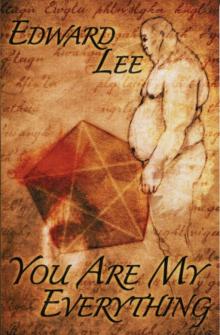 You Are My Everything
You Are My Everything The Backwoods
The Backwoods The Teratologist
The Teratologist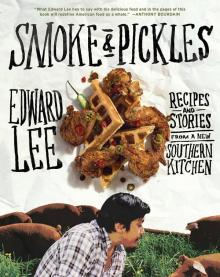 Smoke and Pickles
Smoke and Pickles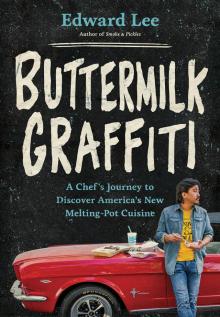 Buttermilk Graffiti
Buttermilk Graffiti Dahmer's Not Dead
Dahmer's Not Dead Quest for Sex, Truth & Reality
Quest for Sex, Truth & Reality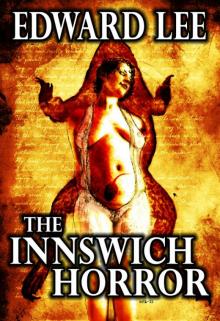 The Innswich Horror
The Innswich Horror Brides Of The Impaler
Brides Of The Impaler Goon
Goon Trolley No. 1852
Trolley No. 1852 Sacrifice
Sacrifice Monster Lake
Monster Lake Succubi
Succubi Lucifer's Lottery
Lucifer's Lottery Monstrosity
Monstrosity The House
The House The Dunwich Romance
The Dunwich Romance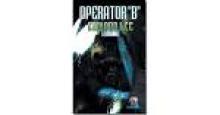 Operator B
Operator B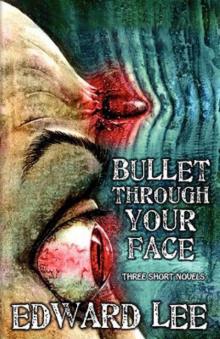 Bullet Through Your Face (improved format)
Bullet Through Your Face (improved format) Grimoire Diabolique
Grimoire Diabolique Room 415
Room 415 The Messenger (2011 reformat)
The Messenger (2011 reformat) Incubi
Incubi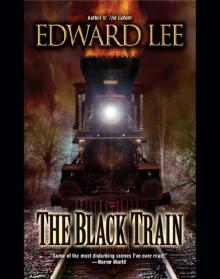 The Black Train
The Black Train House Infernal by Edward Lee
House Infernal by Edward Lee City Infernal
City Infernal Creekers
Creekers The Haunter Of The Threshold
The Haunter Of The Threshold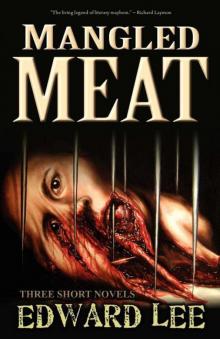 Mangled Meat
Mangled Meat The Doll House
The Doll House Header 2
Header 2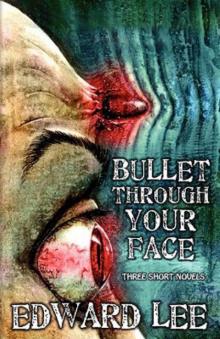 Bullet Through Your Face (reformatted)
Bullet Through Your Face (reformatted) Header 3
Header 3 Infernal Angel
Infernal Angel Pages Torn From a Travel Journal
Pages Torn From a Travel Journal Edward Lee: Selected Stories
Edward Lee: Selected Stories The Bighead
The Bighead The Chosen
The Chosen